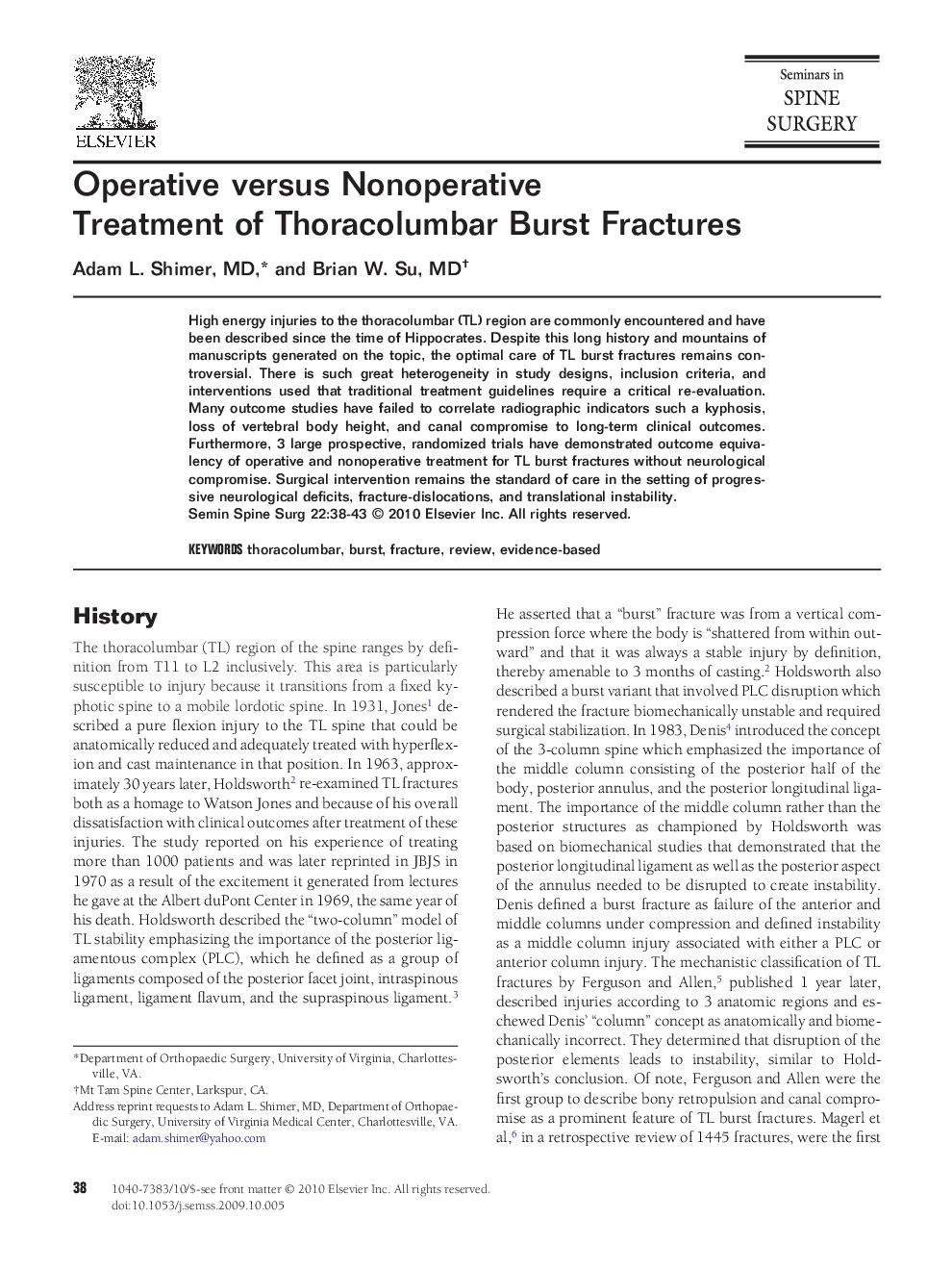| Article ID | Journal | Published Year | Pages | File Type |
|---|---|---|---|---|
| 4094820 | Seminars in Spine Surgery | 2010 | 6 Pages |
High energy injuries to the thoracolumbar (TL) region are commonly encountered and have been described since the time of Hippocrates. Despite this long history and mountains of manuscripts generated on the topic, the optimal care of TL burst fractures remains controversial. There is such great heterogeneity in study designs, inclusion criteria, and interventions used that traditional treatment guidelines require a critical re-evaluation. Many outcome studies have failed to correlate radiographic indicators such a kyphosis, loss of vertebral body height, and canal compromise to long-term clinical outcomes. Furthermore, 3 large prospective, randomized trials have demonstrated outcome equivalency of operative and nonoperative treatment for TL burst fractures without neurological compromise. Surgical intervention remains the standard of care in the setting of progressive neurological deficits, fracture-dislocations, and translational instability.
